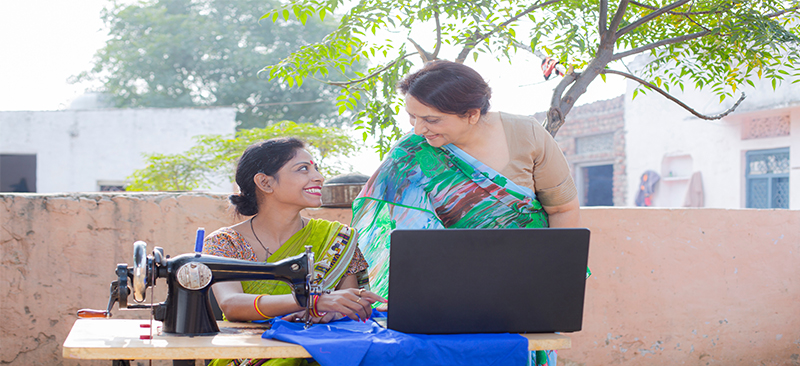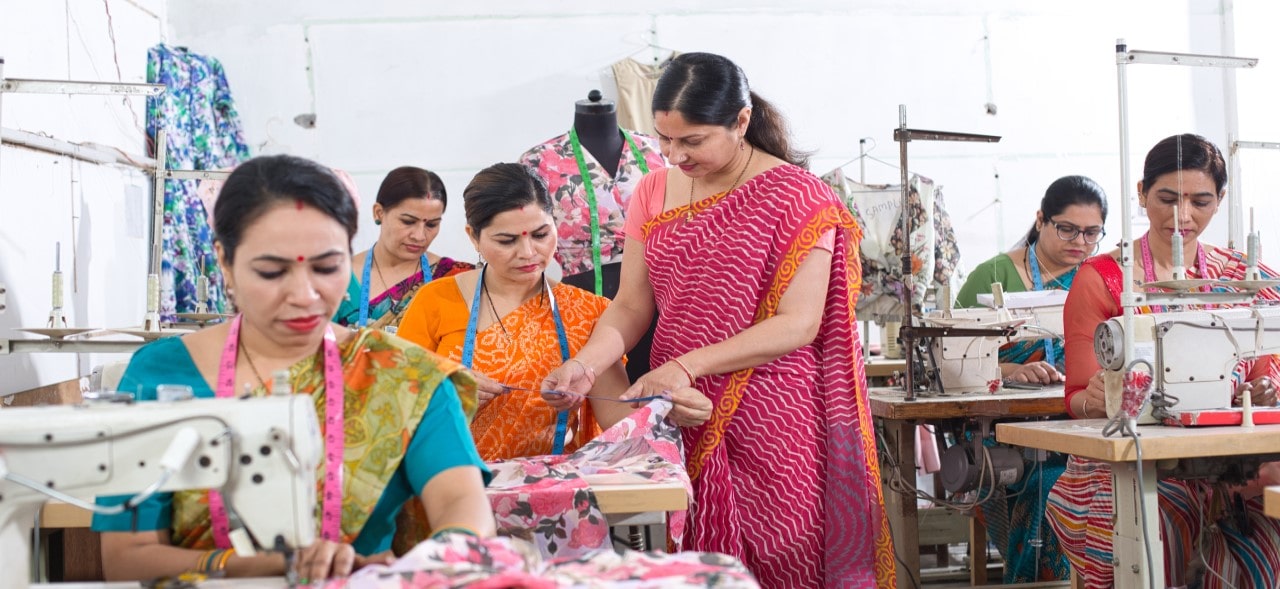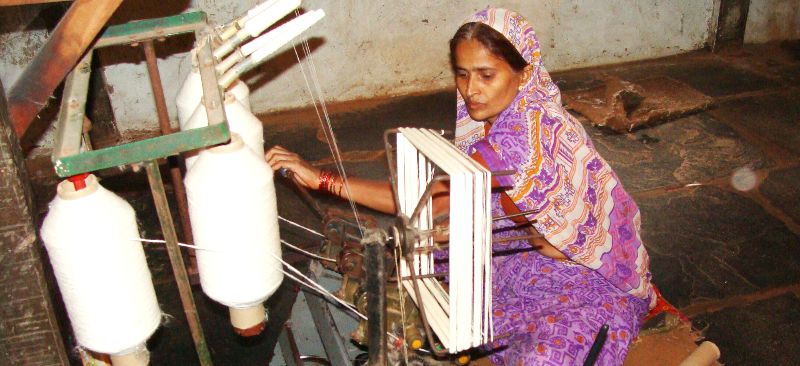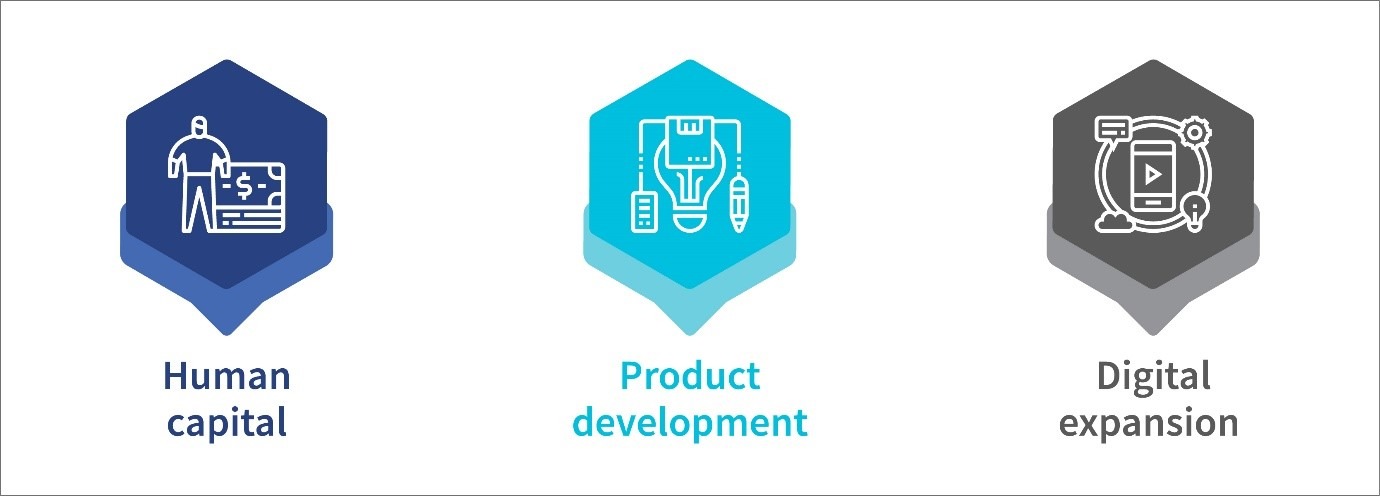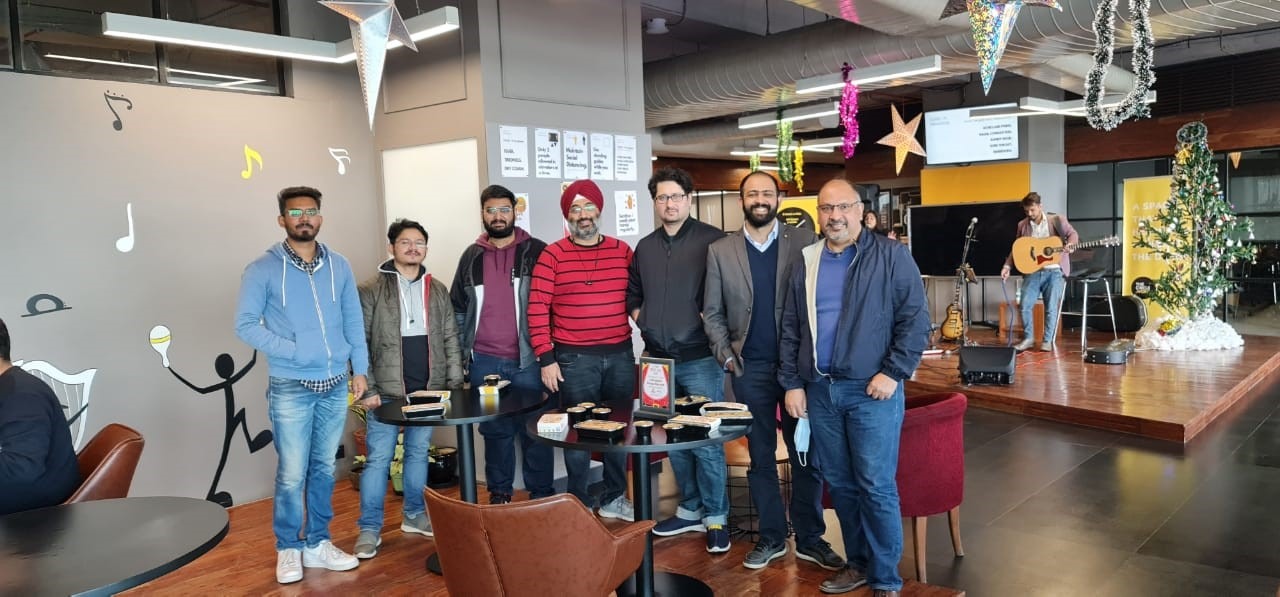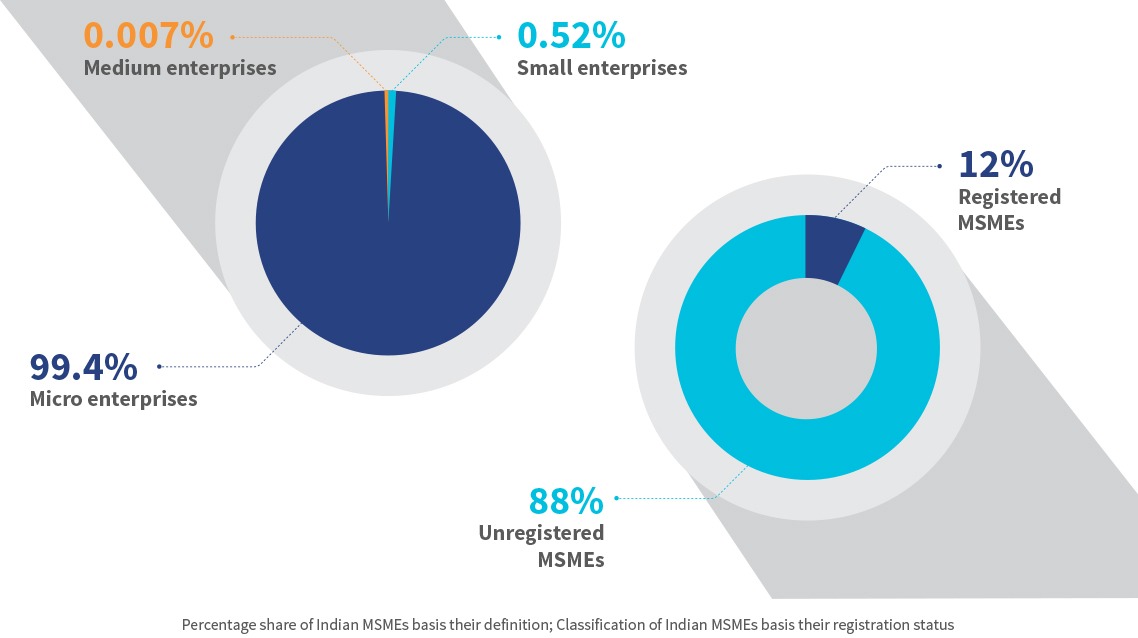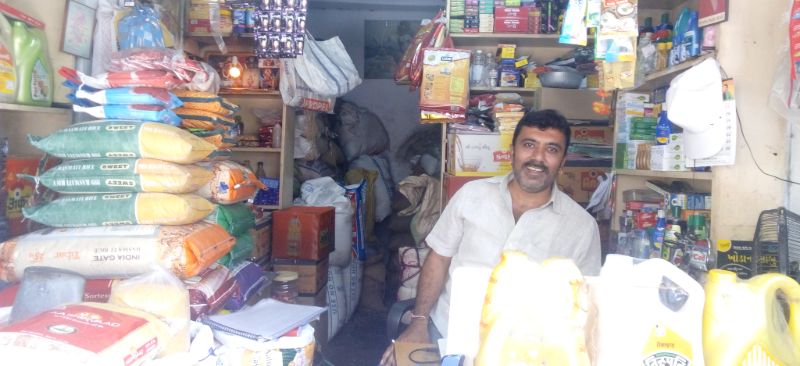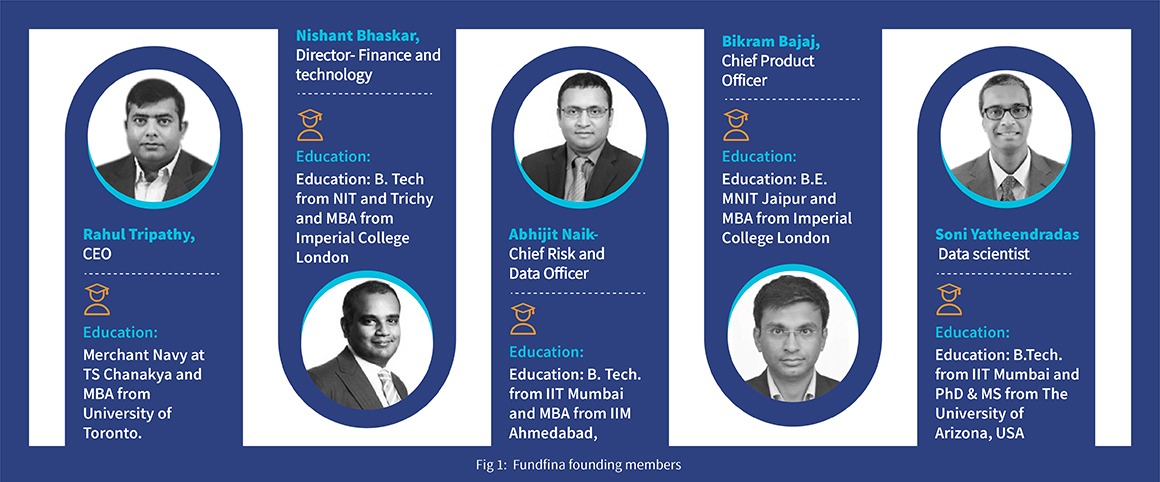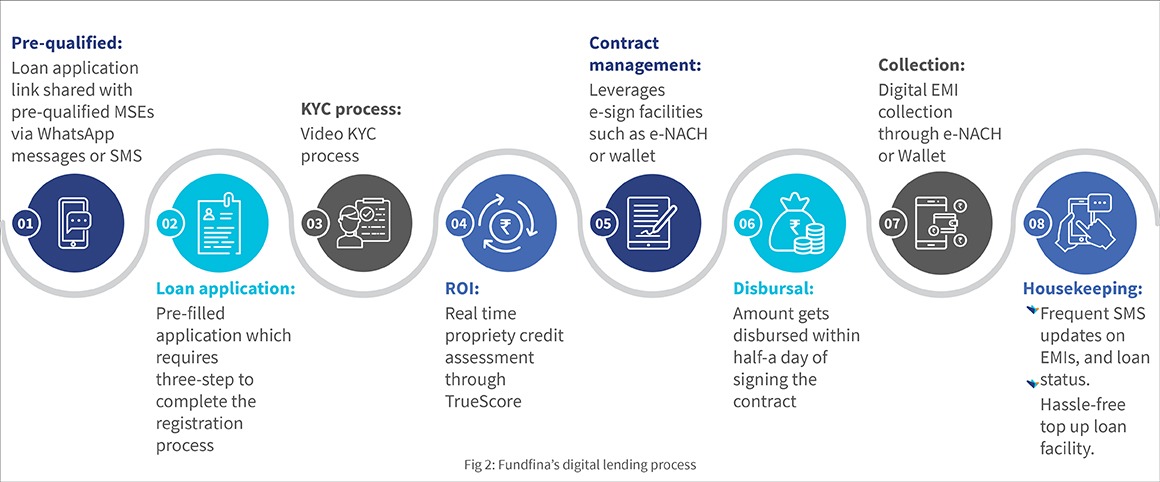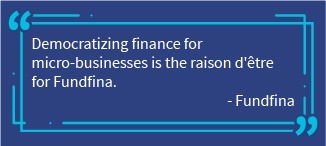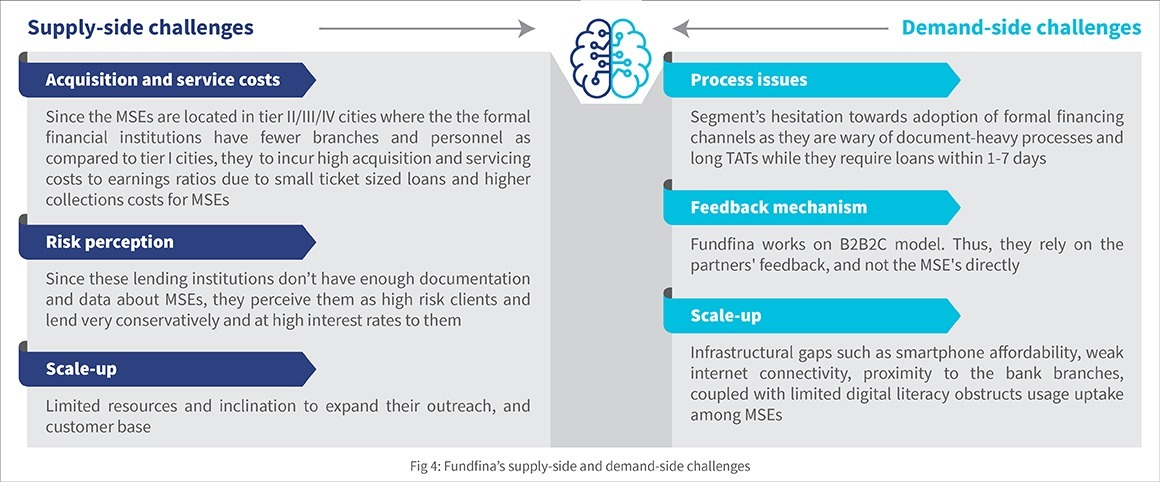This blog talks about a startup called Frontier Markets, part of the Financial Inclusion Lab accelerator program, which is supported by some of the largest philanthropic organizations across the world – Bill & Melinda Gates Foundation, J.P. Morgan, Michael & Susan Dell Foundation, MetLife Foundation, and Omidyar Network.
The problem
Many energy enterprises produce innovative “green energy” products such as solar torches/lanterns but face barriers from a lack of awareness of, or trust in, the technology; and the absence of a localized distribution system. These factors impede the sale and delivery process to end-users, especially those in rural geographies. Frontier Markets identified these problems and converted this into an opportunity for last-mile distribution partnerships with enterprises with a strong market potential in rural India.
The solution
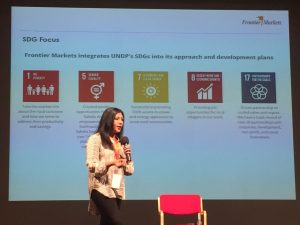 Frontier Markets digitalized while maintaining a human touch in its physical+digital or “phygital” delivery model. The startup’s business model is to onboard women entrepreneurs from rural areas, known as “Sahelis,” by partnering with local self-help groups (SHGs) and non-governmental organizations (NGOs). Frontier Markets then trains these Sahelis and gives them an app. The app is carefully designed to be intuitive and contains a catalog from which the customers can select the products they want. The Saheli records each selected item in the customer’s account and sends the aggregated demand from her verified customers to the Frontier Markets fulfillment team. This team collaborates with the relevant supplier and logistics teams to deliver the items to the customer’s doorstep with Saheli’s support.
Frontier Markets digitalized while maintaining a human touch in its physical+digital or “phygital” delivery model. The startup’s business model is to onboard women entrepreneurs from rural areas, known as “Sahelis,” by partnering with local self-help groups (SHGs) and non-governmental organizations (NGOs). Frontier Markets then trains these Sahelis and gives them an app. The app is carefully designed to be intuitive and contains a catalog from which the customers can select the products they want. The Saheli records each selected item in the customer’s account and sends the aggregated demand from her verified customers to the Frontier Markets fulfillment team. This team collaborates with the relevant supplier and logistics teams to deliver the items to the customer’s doorstep with Saheli’s support.
Thus, this business model allows Frontier Markets’ e-commerce platform to offer rural consumers a wide range of products and services. The startup’s gender-sensitive and data-driven approach create a sustainable way to achieve large-scale rural growth and provide dignified livelihood opportunities to rural women.
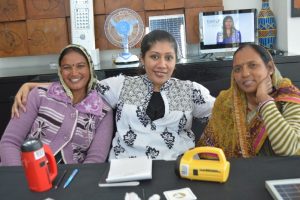
This approach also helps to achieve trusted and strong household connections in previously hard-to-reach rural areas. Such connections, in turn, open channels into the untapped rural market for distribution of global and local brands of consumer goods that were inaccessible to this market because of the high cost of distribution for these brands. The model employed by Frontier Markets has proved to be beneficial for product companies too. It uses a robust, regional language-based technology platform to equip the Sahelis to fulfill orders. This allows Frontier Markets to capture rich rural consumer data that provide valuable insights. These insights help the product companies grow, curate, and refine their product offerings—creating a data feedback loop that enables rural innovation at scale. Furthermore, product companies do not just serve the massive untapped rural consumer base. The insights allow them to offer new and curated product lines to their rural consumers.
The impact
The Sahelis have benefitted both socially and economically from Frontier Markets’ unique approach. Frontier Markets has developed a market for its low- and middle-income consumers—whose households experience volatile and unpredictable patterns of income, ranging between USD 2-10 per day. Frontier Markets has built a network of 10,000 rural entrepreneurs, who collectively generated a sales revenue of INR 250,000,000 (USD 3,362,215) since 2015. Frontier Markets has delivered more than a million products and services to the doorsteps of over 350,000 rural households within 48 hours of orders being placed.
Frontier Markets’ journey has seen its fair share of obstacles. In its early days (2011-2015), the startup had to contend with a lack of a suitable ecosystem in the country, logistics-related problems arising due to bad roads, lack of mobile connectivity, and unreliable electricity in rural areas. So initially, the organization had to work on a high-touch, tech-free model to reach rural customers and build trust.
Things changed in 2016 when the sudden policy move of demonetization of high-value currency notes. That gave a boost to digital payments and channels. Frontier Markets worked with digital services like Jio and Paytm to bridge the liquidity gaps faced by the startup’s consumers by giving credits and advances. It also partnered with local manufacturers to address shortcomings in supply chains.
The latest pivot
The rise of the COVID-19 pandemic, followed by a slew of lockdowns across the country, marked the next turning point for Frontier Markets. The organization had to pivot its product offerings away from prominently consumer durables and energy products. It now had to include essential grocery items, which were in great demand in the rural regions. The agile strategy of revamping its product base allowed Frontier Markets to sustain and grow despite unfavorable market conditions.
Support from the FI Lab
The FILab (CIIE.CO and MSC) has been involved closely with Frontier Markets as one of the startups selected for the Financial Inclusion Lab accelerator program.
Besides imparting workshops to refresh its skills on business strategy, product, and building robust organizations, among other areas, we supported Frontier Markets through mentoring and customized technical assistance in the use of existing data to deliver actionable business decisions. MSC’s technical assistance was along three lines:
- Saheli profiling: To identify the factors that contribute to their performance
- Market basket analysis (combination of products): To find which products can be grouped for cross- and up-selling
- Customer segmentation: To identify loyal customers
Plans for the future
What does the future hold for Frontier Markets? The organization seems poised for growth and intends to raise USD 6,000,000 in its next equity round. The founder believes the fundraising will help Frontier Markets strengthen its existing Saheli network by 1,300% and increase the number of villages it serves by 1,250%. The startup also expects to expand its geographical footprint from three to seven states in partnership with NGOs and SHGs.
Frontier Markets also plans to diversify its products and services. Through its current platform and consumer insights, it hopes to deliver more value-added services in finance and agri-savings, insurance, loans, agri-inputs, and tools, among others, for its consumer base. It has successfully managed the precarious task of adopting new technologies while retaining a human touch through its Sahelis and customer-centric teams.
This blog post is part of a series that covers promising FinTechs that are making a difference to underserved communities. These startups receive support from the Financial Inclusion Lab accelerator program. The Lab is a part of CIIE.CO’s Bharat Inclusion Initiative and is co-powered by MSC. #TechForAll, #BuildingForBharat
